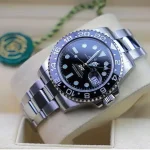Poster printing is an essential and versatile tool for a wide range of applications, from promoting events and advertising products to displaying artwork and educational content. Crafting a compelling poster involves more than just choosing the right paper and printing method; it requires a strategic approach to design and production. This handbook will guide you through the entire process of poster printing, from conceptualization and design to material selection and final printing.
Conceptualizing Your Poster
Define the Objective: Before you begin designing, clearly define the purpose of your poster. Are you aiming to attract attendees to an event, drive sales, or communicate information? Understanding your objective will help shape your design choices and ensure that your poster effectively meets its goals.
Consider their preferences, demographics, and interests. A poster aimed at teenagers will differ significantly from one intended for a professional conference. Knowing your audience helps create a design that speaks directly to them.
Set Clear Goals: Identify what you want to achieve with your poster. Whether it’s increasing brand awareness, driving traffic to a website, or educating viewers, setting specific goals will guide your design and content decisions.
Designing Your Poster
Craft a Strong Message: The core message of your poster should be clear and direct. Focus on delivering a single, powerful message that captures attention and communicates effectively. Use concise, impactful text and avoid overcrowding with too much information.
Visual Appeal: Design elements such as color, imagery, and typography should work together to create a visually appealing poster. Use high-quality images and graphics that enhance your message and draw viewers in. Ensure that your design elements are harmonious and support the overall aesthetic.
Typography: Choose fonts that are readable and appropriate for the poster’s tone. For example, a bold, modern font might be suitable for a promotional poster, while a more traditional serif font could work better for an educational poster. Keep the number of fonts to a minimum to maintain a cohesive look.
Color Scheme: Select a color palette that aligns with your poster’s purpose and message. Use colors that create contrast and draw attention to key elements. A well-chosen color scheme can enhance visual appeal and reinforce the poster’s message.
Layout and Composition: Arrange design elements to create a balanced and visually appealing layout. Use techniques such as alignment, spacing, and hierarchy to guide the viewer’s eye and emphasize important information. A clean, organized layout helps ensure that your message is easily understood.
Selecting Materials and Finishes
Paper Options: The choice of paper affects the look and durability of your poster. Options include:
- Glossy Paper: Provides a shiny finish that enhances color vibrancy and contrast, ideal for eye-catching designs.
- Matte Paper: Offers a non-reflective finish that reduces glare and gives a more sophisticated appearance.
- Photo Paper: Ideal for high-resolution prints and detailed images, providing a high-quality finish.
Vinyl: Vinyl posters are durable and weather-resistant, making them suitable for outdoor use and long-term displays. They are often used for banners and large-scale advertising due to their strength and flexibility.
Canvas: Canvas provides a textured, premium finish that is often used for art prints and gallery displays. It adds depth and a high-quality feel to the poster, making it suitable for artistic and high-end applications.
Fabric: Fabric posters are lightweight and easy to transport, making them ideal for events and temporary displays. They are durable and wrinkle-resistant, offering a practical solution for various display needs.
Printing Techniques
Digital Printing: This method produces high-resolution prints directly from digital files. It is versatile and efficient, making it suitable for both small and large print runs.
Offset Printing: Suitable for large quantities, offset printing uses plates to transfer ink onto the paper. This method provides consistent, high-quality results and is cost-effective for bulk printing. It is widely used in commercial applications.
Screen Printing: Screen printing involves creating a stencil and applying ink through it. This technique is ideal for designs with solid colors and large ink areas. It is often used for non-paper materials like fabric and vinyl, providing vibrant and durable prints.
Large Format Printing: This technique is used for oversized posters and banners. Large format printers handle larger media sizes, making it possible to create high-impact visuals for events, advertising, and large-scale displays.
Practical Tips for Successful Poster Printing
Proofread Carefully: Before finalizing your design, thoroughly proofread all text to catch any spelling or grammatical errors. A mistake in your poster can undermine its professionalism and effectiveness.
Test Prints: Consider producing a small test print to evaluate the design’s appearance and quality. This allows you to make any necessary adjustments before committing to a full print run.
Choose a Reliable Printer: Select a printing service with a reputation for high-quality output and reliable service. Professional printers can offer valuable advice on material choices, finishes, and printing techniques.
Consider Finishing Options: Enhance your poster with finishing touches such as laminating, coating, or mounting. These options can improve durability and presentation, giving your poster a polished, professional look.
Plan for Display: Think about where and how your poster will be displayed. Choose materials and finishes that are appropriate for the display environment, whether it’s indoors or outdoors.
Measure and Adjust: Ensure that your poster dimensions are suitable for the display area. Measure the space where the poster will be placed and adjust the size as needed to ensure a perfect fit and maximum visibility.
Conclusion
Poster printing is a powerful and versatile medium for visual communication. By understanding the different types of posters, selecting the right materials and printing techniques, and adhering to key design principles, you can create posters that are both visually striking and effective in achieving your objectives. Whether for promotional, educational, or artistic purposes, mastering the art of poster printing will enable you to produce impressive and impactful visuals that capture attention and convey your message effectively.




